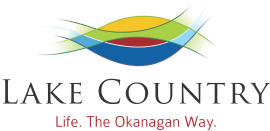Water Operations
The District of Lake Country (DLC) is a growing municipality with an approximate population of 15,000 people. Not all 15,000 residents are connected to the DLC’s public water systems. The primary upland sources used by the DLC include Beaver Lake, Crooked Lake, Oyama Lake, and Damer Lake. The lower elevation water sources are Okanagan Lake (3 separate intakes) and Kalamalka Lake. Infrastructure within the DLC owned water systems include 6 storage dams, 10 reservoirs, 6 chlorine injection systems, 9 pump houses, 2 UV disinfection systems, 6 pressure boosting stations, 41 pressure reducing stations, 85 pressure reducing valves, 514 hydrants, and approximately 200 km of water distribution mains
Cross Connection Control & Backflow Prevention
A Cross Connection Control Program (CCCP) helps establish protocols to protect the drinking water supply from potential contamination through cross connection and backflow. The District’s Permit to Operate (issued by the Interior Health Authority) requires the District to have a comprehensive CCCP. For More information on the District’s CCCP see the following:
- DLC Cross Connection Control Program
- Water Regulations and Rates 984 Bylaw - Section 14- Cross-Connection
Backflow prevention devices (BPD) such as approved double check valve assemblies, reduced pressure backflow assemblies and pressure vacuum breakers require frequent testing and inspections to ensure they are in good working order. Residential users require that their BPD be tested every three years. Commercial users require annual testing of their BPD. Agricultural & seasonal irrigation services require testing annually, however testing on agriculture and season irrigation services is conducted by the District. Testing must be completed by an individual who is certified, and test results can be submitted to the District of Lake Country via email at deveng@lakecountry.bc.ca with attention to: Sarah Graham.
- BFD Test Report [PDF/149KB]
- Backflow Removal Form
Winterizing your backflow preventer for agricultural properties is an necessary process to ensure it’s functionality the following year. Watch a brief video to learn how to winterize your backflow preventer on an agricultural property.
Watermain Commissioning
Please refer to the New Watermain Commissioning Policy 189, 2021 [PDF/1.6MB] and complete the appropriate forms (included with policy document) before commissioning a new watermain for a development.
Seasonal Irrigation
Seasonal irrigation turn ons typically occur the third week of April.
Turn offs typically occur the second week of October.
REQUEST irrigation turn on/off
